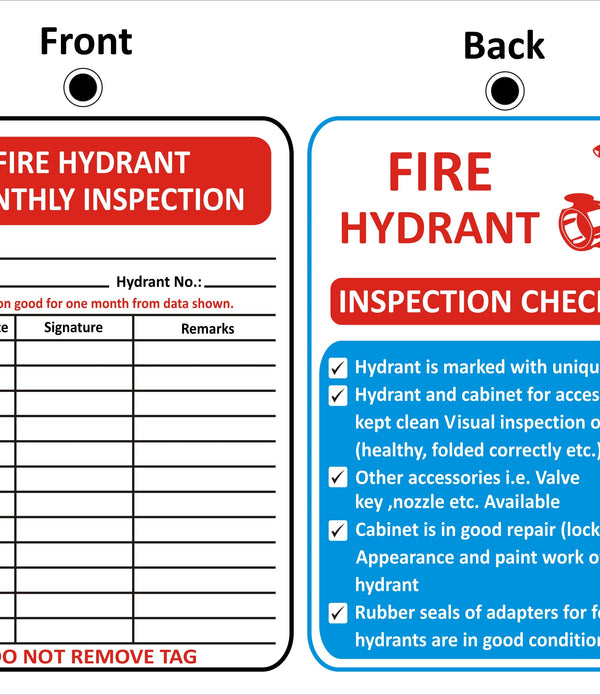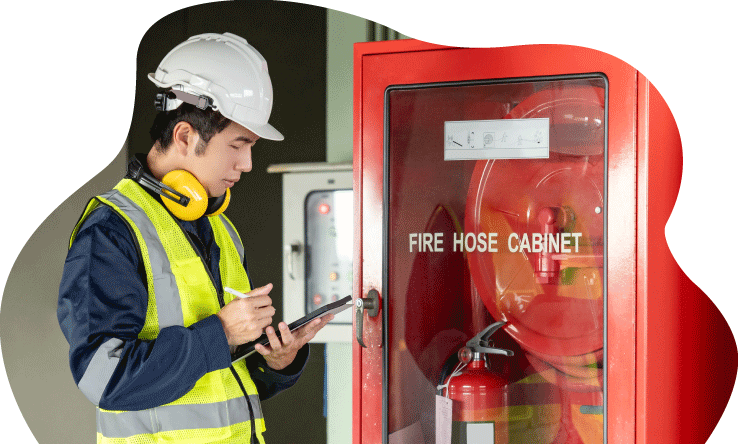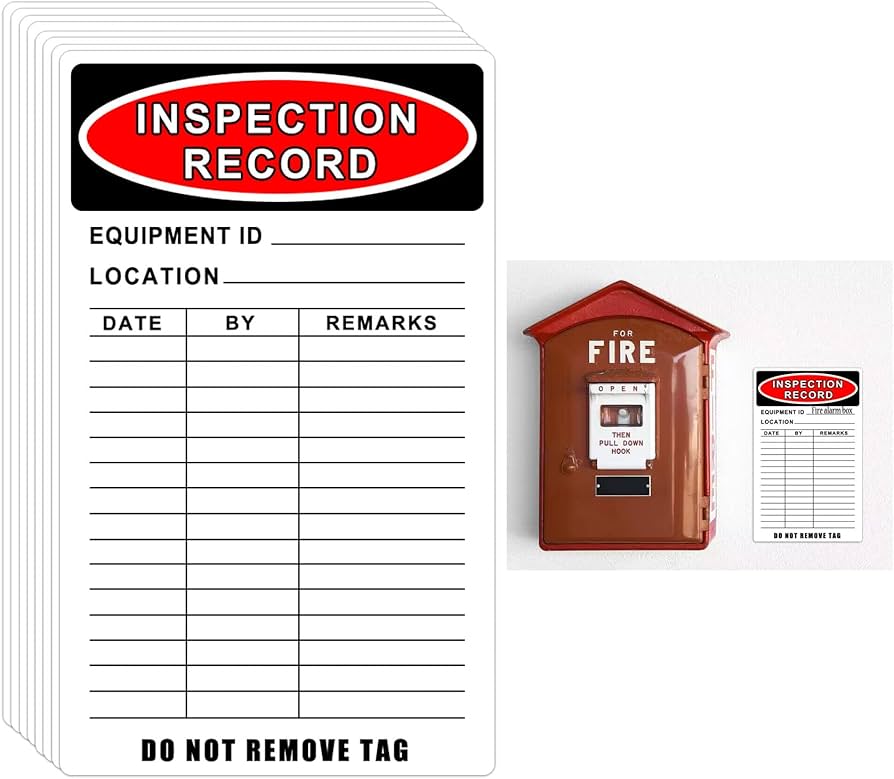Fire safety is crucial everywhere. In Saudi Arabia, regular inspections are vital.
Ensuring fire hose cabinets function properly can prevent disasters. Fire hose cabinets play a key role in emergency situations. Their readiness and condition can make a difference when seconds count. Regular inspections ensure they meet safety standards and are ready for use.
In Saudi Arabia, specific guidelines help maintain these vital tools. Knowing what to check and how often is important for safety compliance. This checklist simplifies the process, making inspections thorough and effective. Whether for a business or a residential building, understanding these checks helps maintain a safe environment. Let’s explore the essential steps for inspecting fire hose cabinets in Saudi Arabia.
Regulations In Saudi Arabia
Ensuring fire safety in Saudi Arabia is crucial for public safety. The government has set strict regulations to prevent fire hazards. These rules help protect people and property from fire-related incidents. Regular inspection of fire hose cabinets is part of these safety measures. Understanding these regulations is vital for compliance and safety.
Fire Safety Standards
Saudi Arabia follows global fire safety standards. These standards guide the installation and maintenance of fire equipment. Fire hose cabinets must meet specific criteria. They should be easily accessible and functional. Regular checks ensure they work properly during emergencies. Compliance with these standards is essential for safety.
Compliance Requirements
Businesses must comply with fire safety laws in Saudi Arabia. Regular inspections of fire hose cabinets are mandatory. This includes checking for damage, leaks, and proper labeling. Records of inspections should be maintained. Non-compliance can lead to penalties or fines. Adhering to these requirements ensures safety and legal compliance.
Inspection Frequency
Inspection frequency is crucial for maintaining fire safety in Saudi Arabia. Regular checks ensure fire hose cabinets are in top condition. This reduces the risk of malfunction during emergencies. Understanding the types of inspections is key. Let’s explore routine checks and annual inspections.
Routine Checks
Routine checks are performed monthly. These checks ensure the cabinet is accessible. Inspectors look for clear signs of wear or damage. They verify that hoses are neatly coiled. The nozzle should be in good condition. Valves must turn easily. Routine checks are quick but vital. They keep fire safety equipment ready for use.
Annual Inspections
Annual inspections are thorough. They involve detailed examination of all components. Inspectors test the water pressure. They assess the overall integrity of hoses. Any worn or damaged parts are replaced. Cabinets are cleaned and lubricated. Annual inspections often require professional expertise. They ensure compliance with safety standards in Saudi Arabia.
Visual Inspection
Visual inspection of fire hose cabinets in Saudi Arabia is essential. It ensures the safety and readiness of firefighting equipment. A thorough check can prevent failures during emergencies. This section covers key aspects of visual inspection.
Cabinet Condition
Inspect the fire hose cabinet for any signs of damage. Look for rust, dents, or cracks. Ensure the cabinet door opens and closes properly. Check the hinges and locks for wear and tear. A well-maintained cabinet protects the equipment inside. It also keeps it accessible during emergencies.
Signage Clarity
Examine the signage on the fire hose cabinet. The signs must be clear and easy to read. They should indicate the presence of firefighting equipment. Ensure the signs are not faded or obscured. Replace any damaged or missing signs immediately. Clear signage helps in quick identification during an emergency. It ensures that anyone can find and use the equipment without delay.

Credit: safetstores.com
Functional Tests
Functional tests are crucial in ensuring fire hose cabinets are operational. These tests help identify potential issues before they become serious problems. Regular inspections guarantee safety and compliance with Saudi Arabia’s fire safety regulations. Two essential aspects of these tests include checking the hose condition and water flow. Both are vital for effective firefighting operations.
Hose Condition
The hose condition must be thoroughly inspected for any signs of wear. Check for cracks, splits, or frayed sections. These can compromise the hose’s integrity during use. Ensure the hose is flexible and not brittle. A brittle hose can break under pressure, leading to a failure during emergencies.
Inspect the hose connections. Ensure they are secure and free from corrosion. Corroded connections may lead to leaks. Leaks reduce the water pressure necessary for fighting fires. Regular maintenance of these components is essential for reliability.
Water Flow
Test the water flow to ensure it is strong and consistent. Weak water flow can hinder firefighting efforts. Ensure the water pressure meets the required standards. Low pressure can result in ineffective fire suppression. Check for any blockages in the hose. Blockages can restrict water flow and reduce efficiency.
Inspect the nozzle for proper operation. The nozzle should easily adjust to different spray patterns. Different patterns are necessary for various firefighting scenarios. Regular testing ensures the nozzle works as intended during emergencies.
Documentation
Documentation is crucial for ensuring safety and compliance in fire hose cabinet inspections. Proper records help track maintenance and identify potential hazards. In Saudi Arabia, documentation is key to maintaining effective fire safety measures.
Record Keeping
Accurate record keeping ensures all inspections are logged and accessible. Each inspection should be dated and signed by the inspector. This provides accountability and a clear trail of inspection activities. It’s important to store these records securely for easy retrieval.
Inspection Reports
Inspection reports detail findings and actions taken during checks. They should include any defects found and repairs made. This helps in tracking issues over time. Reports must be clear and concise, offering a snapshot of the cabinet’s condition. Regular reviews of these reports ensure ongoing compliance and safety.

Credit: www.reachoutsuite.com
Common Issues
Fire hose cabinets play a crucial role in emergency preparedness in Saudi Arabia. Regular inspections ensure they function correctly. But, many common issues can arise, affecting their effectiveness. Identifying these problems early ensures safety and compliance.
Damaged Equipment
Damaged equipment is a frequent issue during inspections. Fire hoses may have tears or wear from frequent use. Nozzles may be cracked or broken, affecting water flow. Cabinets sometimes rust or corrode, weakening their structure. Regular checks help identify and address these damages.
Blocked Access
Blocked access to fire hose cabinets is a significant problem. Obstructions such as furniture or stored items hinder quick access. In emergencies, every second counts. Ensure the area around the cabinet is clear and accessible. Regularly inspect for any items blocking the path to the cabinet.
Training For Inspectors
Inspectors in Saudi Arabia benefit from a clear checklist for fire hose cabinet inspections. It ensures safety standards are met. Regular checks help identify issues early, maintaining equipment readiness and compliance. Training empowers inspectors to perform thorough evaluations, enhancing fire safety protocols effectively.
Training for inspectors conducting fire hose cabinet inspections in Saudi Arabia is crucial for ensuring safety and compliance. The right training empowers inspectors to perform thorough evaluations, identify potential hazards, and recommend corrective actions. Let’s dive into the essential skills and best practices that make this training effective.Skills Required
Inspectors need a keen eye for detail. They must recognize signs of wear and tear, such as cracks or leaks in hoses. Understanding local regulations and safety standards is crucial. This ensures that inspections align with Saudi Arabian safety requirements. Communication skills are vital. Inspectors often interact with facility managers and need to clearly explain findings and recommendations.Best Practices
Regular training updates keep inspectors informed about the latest safety codes and inspection techniques. Are you ensuring your team stays current? Hands-on training sessions can enhance learning. Practical exercises help inspectors apply theoretical knowledge in real-world scenarios. Encourage inspectors to share experiences and insights. This fosters a culture of learning and continuous improvement. Consider developing a checklist to guide inspections. A structured approach ensures no critical aspect is overlooked. Remember, effective inspection training not only protects facilities but also saves lives. Are you investing enough in your inspectors’ development?
Credit: www.amazon.sa
Future Trends
Fire hose cabinet inspections in Saudi Arabia are becoming a priority for safety. Regular checks ensure equipment readiness and compliance with regulations. This trend highlights the need for thorough and consistent maintenance practices.
As we move into the future, the inspection of fire hose cabinets in Saudi Arabia is set to undergo significant changes. These changes are fueled by technological advancements and a stronger emphasis on improving safety measures. Understanding these trends is crucial for ensuring that you are prepared for the evolving landscape.Technological Advancements
Imagine a world where fire hose cabinets are equipped with smart sensors. These sensors can instantly alert you to any issues, like leaks or blockages, right from your smartphone. This isn’t a distant dream; it’s quickly becoming a reality. The integration of IoT technology in fire safety equipment allows for real-time monitoring and data collection. It means you can track the status of your fire hose cabinets without physically inspecting them. This saves time and ensures consistent safety checks, reducing the risk of oversight. Are you ready to adopt these technologies? They can transform how you manage fire safety, making inspections more efficient and reliable.Improving Safety Measures
Future trends also point toward enhanced safety protocols. With increasing urbanization in Saudi Arabia, the need for robust fire safety measures grows. How can you ensure your fire hose cabinets are up to the task? One approach is regular training for your team. Equip them with the latest knowledge and skills to manage fire emergencies effectively. It’s not just about the technology; it’s about the people who use it. Consider updating your inspection checklist to include new safety standards. Incorporating precise guidelines will help prevent accidents and ensure quick response during emergencies. Are you ready to rethink your safety measures and make your environment safer? By keeping an eye on these future trends, you can stay ahead and ensure that your fire hose cabinets are always in top condition. As technology evolves and safety standards rise, are you prepared to embrace the changes and enhance your fire safety strategy?Frequently Asked Questions
How Do You Inspect A Fire Hose Cabinet?
Inspect the fire hose cabinet for accessibility and clear labeling. Check the hose, nozzle, and connections for damage. Ensure the hose reel turns smoothly. Confirm the water supply is functional. Verify that the cabinet is free from obstructions and locks or seals work properly.
What Is The Saudi Aramco Typical Inspection Plan?
Saudi Aramco’s typical inspection plan involves regular equipment assessments, safety checks, and quality audits. These inspections ensure compliance with industry standards and enhance operational efficiency. The plan includes routine maintenance, risk evaluations, and timely reporting to maintain high safety and performance levels.
How Often Do Fire Hoses Need To Be Inspected?
Fire hoses need to be inspected annually. Regular inspections ensure functionality and safety. Always follow local regulations and guidelines.
What Is Checked During A Fire Inspection?
During a fire inspection, inspectors check fire alarms, extinguishers, emergency exits, sprinkler systems, electrical wiring, and fire escape plans. They ensure proper signage and clear pathways. Inspectors also verify that fire safety equipment is maintained and accessible.
Conclusion
Regular inspections of fire hose cabinets are essential in Saudi Arabia. They ensure safety and compliance. Following a checklist makes inspections easier and more effective. Check for visible damages, proper labeling, and working conditions. Make sure all parts function correctly.
Well-maintained equipment can save lives during emergencies. Always prioritize safety and readiness. Staying proactive prevents potential hazards. Keep records of each inspection for future reference. Regular updates and training are also important. By following these steps, you maintain a safe environment.
Safety is everyone’s responsibility. Ensure your fire hose cabinets are always ready for action.

